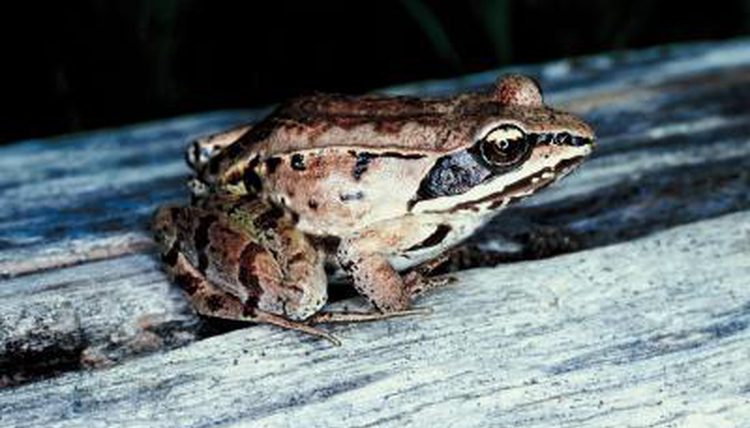The Life of a Woodfrog
I’ve always been fascinated with those rare individuals that have spent a lifetime studying the exception in nature. Neurologist Dr. Oliver Sachs’ fascination with patients with post-encephalitic Parkinson’s disease and extreme mental disorders. Tornado-chasers. Dr. Dian Fossey’s need to experience the lives of gorillas in Zaire. Or scientists postulating on why humans are the only species to “gasp…”
It’s always seemed to me that in looking under the hood at the oddities of life – it’s a back-door reminder of how extraordinary the gift of life is on our planet.
But my favorite oddball on the nature highlight reel is the woodfrogs living on the ice in the upper regions of Canada and at the Antarctic.
They make hibernating bears look like nappers. When it gets too cold for the woodfrogs in the winter months, they don’t cuddle up in a cozy cave and eat and drink themselves into hibernation – they lay down right on the ice and freeze. On purpose. Completely freeze. Like a popsicle kind-of freeze. Their hearts stop, their brains flat line; they’re deader than a doorknob in every possible way by any other animal’s definition.
Five months later, temperatures warm up – and somehow, someway, they come back to life. It defies everything scientists understand about how brains and hearts work. Cells don’t destruct – and for all intents and purposes – the woodfrogs haven’t aged a day.
Cryobiologists have recently discovered their “secret sauce.” Their bodies handle massive quantities of glucose, allowing them to thaw “from the inside-out,” instead of the other way around. If you froze humans, the last thing to thaw would be their hearts.
Glucose “warms” the woodfrog’s heart, and its heart miraculously begins pumping, slowly sending blood through its cold pipes. Before long, the woodfrog is back to business as usual.
I wouldn’t count on humans any day in the near future being able to skip the cold winter months by taking glucose pills and hopping in the freezer, but already science’s understanding of this biological anomaly is affecting transplantation and organ donorships.
Biologists are finding that the mixture of glucose and anti-freeze proteins found in certain Antarctic fish can prolong the lifespan of removed organs. If we can learn from the woodfrog, we may be able to freeze and preserve organs; completely changing the current frenetic and unpredictable world of transplantations.
A tree in Argentina has been attracting tremendous crowds; many believe the Virgin Mother’s face is miraculously in the bark of the tree trunk. Thousands of people line up daily, coming from hundreds of miles away, to look at this “sign.” Some believe it is shedding tears during the day.
For my money, if someone wants to see the face of God, I’d head to Ottawa, Canada and watch a woodfrog thaw back to life. If that isn’t a miracle, I don’t know what is.
P.S.
After jotting this down, I was telling my youngest daughter about the wonder of the woodfrog. I proposed that maybe, someday in the future, people may be able to “freeze” for 50 years. She said, “Why would I want to leave you and come back in another time?”
After jotting this down, I was telling my youngest daughter about the wonder of the woodfrog. I proposed that maybe, someday in the future, people may be able to “freeze” for 50 years. She said, “Why would I want to leave you and come back in another time?”
After a long day of work, in that single moment, I became a woodfrog. She warmed my heart from the inside-out.

